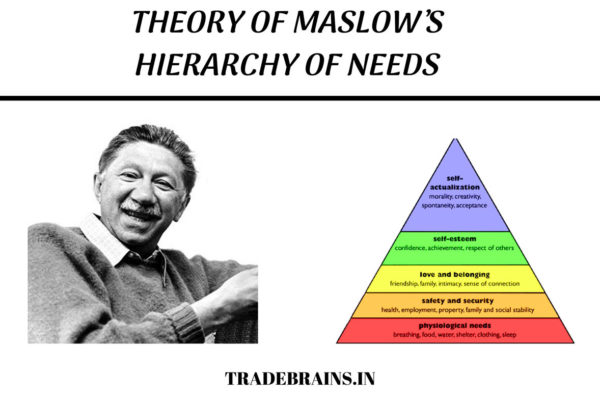
Quality – the customer’s perspective
Lizi Tchonkadze and Mariam Baghdoshvili , IBSU , Marketing
There are 6 micro environment factors: customers, competitors, suppliers, dealers and distributors, investors and the last but not the least – general public.
Customers
Let’s first talk about customers. Customers are the key point in every business. They’ve got the power and control when it comes to products or services. They are the one who can change the demand of our product and it can influence our business in many ways. In the twenty-first century, their significance has increased. Furthermore, the better a company understands its clients, the better its bottom line would be. By better knowing its clients, a company may develop advertising strategies and campaigns that successfully attract and retain customers.
It Means delivering products or services to customers faster, better, cheaper and meeting the customer’s needs and expectations. When the customers’ needs and expectations are met and if they are entertained, customers spread advertising, which automatically means more customers and more demand.
Quality – the customer’s perspective
- Quality – demand (quantity of customer)
- High Quality – requires higher but reasonably price
- Durability of a product
- Quality – image of the company (recognition and reputation)
- Customer – main focus
- Product/service
- Use – function satisfying/meet customer expectations
- Visual – features attracting customer attention/ appealing to the customer
- Recommendation – customer review, reputation/image of company
- Additional services – guarantee, delivery, call/info centers, maintenance services
- Product/service
With this the company will be able to capture market with better quality and price, meaning enter the new market and have possibility to decrease the cost.
To summarize, organizations must implement a marketing strategy that attracts potential customers and retains existing customers by considering the wants and needs of customers and providing after-sales and value-added services.
Competitors
An organization’s competitors can have a direct impact on its business strategies. The company must be able to conduct a competitive analysis of its competitors in order to gain a competitive advantage. An organization must know what value added services or unique selling points their competitors offer. To put it another way, learn about your competitors’ marketing mix strategy, which includes things like product, price, placement, promotion, people, process, and physical evidence. PEST Analysis, PESTLE Analysis, and SWOT Analysis are other approaches for market competitive analysis.
An organization must recognize that being unaware of competitors makes it difficult to beat them and lead the market. It must understand how competitors react when the market environment changes, such as political and legal changes, technological changes, and changes in consumer behavior, all of which can have an impact on their business. They should also look at how their competitors are reacting to market changes and what strategies they are employing in order to better plan for these changes.
Because we have talked about competitors, I would like to mention mergers as well. Two companies come together and form as one company. There are some reasons for that – reasons of growth, or increased competitive advantage, or extending their product line into other related areas. Yes, statistically 1 out of 4 mergers fail, mostly cause of culture clash between two company’s employees, but there are some success stories as well. For example, Facebook and whatsapp.
Suppliers
At any point of the product lifecycle, suppliers play a critical role. Companies must work closely with their manufacturers to get the most out of their goods, from sourcing raw materials to assisting with production ramp-up to seeking better raw material alternatives as the market becomes saturated.
The suppliers are extremely important factors as:
- Key link in the value delivery process
- Insurance that your business has the necessary resources
- Essential determinants in terms of price increase or decrease
Suppliers provide businesses with the materials they need to carry out their business activities. The action of a supplier has a direct effect on the company it represents. For example, if a supplier offers bad service, timescales or product quality can be affected. Raw material price increases can have an effect on a company’s marketing mix policy, and could even force price increases. Maintaining close supplier relationships is a smart way to stay competitive and maintain high-quality goods.
Dealers and Distributors
With the help of dealers and distributors, a company channelizes its products from the manufacturing units to the market. As this group represents the company, their active role in delivering the products to the end-user and ensuring that commodities are well in stock and easily available in stores, retails or other access points is vital for business establishment.
Distribution channels and methods
Type of Product, Company Policy
- Direct sale
- Open an office/ sales point – in charge of customer relations, choose a seller/own, learn and analyze the customer profile yourself. Be present during customer relation, get insight. Costly in terms of place, equipment or office expenditures, specialized salesforce – send your people or train the locals.
- Domestic export firms
- Organizations that import several brands and products – handle the customs, taxes and they contact the salespoints. Less costly due to shared transport, warehouse and human expenditures. No requirement to operate in foreign country, pay upon the sales. No priority to your product, no marketing in local country.
- Agent
- Exclusive representative, selling only your brand, personal selling, contact person. Specialized equipment/product. Visit to customer, upon the interest the product is shifted, limited stock, on-request basis. The percentage/salary is very high. There is a risk of trust.
- Distributors
- More loyal than the agents, hired by your company, or outsourced, you pay for them. More responsibility. Involved in examining the trends of sales, feedback on popularity, customer preferences. Make modifications in sales policy, marketing plan, features of the product. Cost can be disadvantage; it requires additional transport costs.
- Licensing
- Giving a permission to a domestic producer to use the formula and produce your product locally, with brand protection. – Coca Cola
- Franchising
- Giving a permission to a domestic company duplicate your operations, style, management aspects, layout are preserved in the same format. – McDonalds
- Joint venture
Union on foreign and domestic company – upon the agreement
Investors
They are the prime assets of an organization. The more they invest, the more a company becomes capable of spending in its various departments. Investor relationship is very vital in this context. If they are happy with the product performance, they will, in all probability invest a higher amount for more returns. Hence, besides satisfying the customers, companies also need to look after their investors and waste no means to retain them within the organization’s fold.
Types of investors:
- Angel investors – An angel investor is a person who invests in start-up companies with substantial financial capital. Angel investors are known for pursuing their gut instincts and investing in companies that would otherwise fail to attract other forms of investors. In some cases, an angel investor might only ask for a share of the company’s profits, while in others, he may demand partial equity and a say in management decisions.
- Peer-to-Peer Lending – Peer-to-peer lending is generally done through websites that link investors with small business owners. On a peer-to-peer lending platform, entrepreneurs build a profile and post a business plan, and lenders compete to invest in the company. The owner and the lender, who is generally a private person, agree on an interest rate for the investment, after which the lender provides the funds to the entrepreneur.
- Venture capitalists – A venture capitalist is a financial institution that invests in enterprises that have already shown a track record of success. Risky start-up companies that need a small amount of capital to get started are rarely pursued by venture capitalists. Venture capitalists usually request partial control of the company in which they invest, as well as a say in management decisions.
- Banks – A bank loan functions similarly to other types of business investments. Banks insist that the entrepreneur identify his company and present a business plan before determining whether or not to provide financing in the form of a loan.
- Personal investors – Friends and family members with means can also be considered business investors. The contract should spell out the amount of money being invested, the rate of return, and any ownership provisions that might be included.
General Public
Companies must accept a larger aspect of the micro environment, namely the mass, for long-term survival. While companies will never sell to every individual in a given area, their continued survival will be determined by how these people view the brand, company logo, or product itself.
Companies, for example, often offer free sample items to the general public or host conferences, media gatherings, and press releases, among other things. They also invest in community development, such as the construction of sanitation units, or participate in public service. They also generate environmental studies. They gain market confidence and faith by doing so, not just from their customers, but also from the general public, including environmentalists, the media, consumer rights advocates, and other social groups active in their area of activity.





